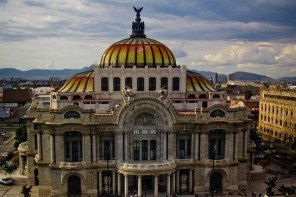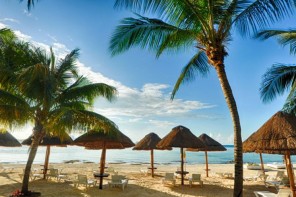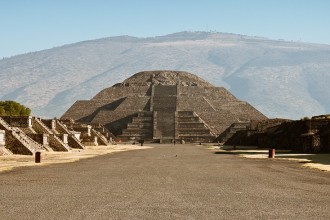In Yucatec Mayan, the name Tulum translates to wall, fence or fortification. The Yucatan’s Tulum is indeed a fortified city, surrounded on three sides (North, West, and South) by a “Great Wall” of stone. To the East lies the beautiful Caribbean Ocean. Originally, the city of Tulum was called Zama which means “to the dawn” or “sunrise”. Here, high atop majestic cliffs, overlooking powdery sands and turquoise waters, sunrise is indeed a spectacle to behold.
Tulum was most active from 1200 – 1521 A.D., when it was a principal commercial port, joining the land and sea trade routes . Evidence still remains of her Early Post Classic marketplace, tucked in among her jagged cliffs and dotting her white sand beaches.
The oldest artifact from this site, Tulum Stela 1, dates to the Early Classic period approximately 564 AD/CE, although it was most likely imported from nearby XelHa. Likewise, Stela 2 (dated 761 AD), was brought in from the Late Pre-Classic town of Tanach.
Most buildings on site were added to during the Late Post Classic era, but date originally to the Early – Post Classic period. For a detailed description of Tulum’s major structures, visit our internal links, easily accessed via this image map.
History:
Tulum Timeline: Modern Explorers and their Tales
1502- Letter of Bartolomeo, detailing expedition of Cristopher Columbus.
1518 – Expedition of Juan de Grijalva
1562 – Diego de Landa burns codices
1579 – “Las Relaciones de Yucatan” penned by Juan de Reigosa
1639 – Pedro Sanchez de Aguilar writes “Informe Contra Idolorum Cultores del Obispado de Yucatan”
1840 – Letter of Juan Pio Perez, detailing the Ascencion Bay journey of Juan Jose Galvez
1841 – Stephens and Catherwood expeditions result in the book, “Incidents of Travel in Yucatan”
1847- War for the Castes. Tulum is occupied by rebel Maya.
1871- Maria Uicab, Patron Saint/Queen of Tulum, occupies the city with her Cult of the Speaking Cross.
1895 – Expedition of W. H. Holmes
1913 – Sylvanus G. Morley, George P. Howe and J. L. Nussbaum visit Tulum
1916 – Sylvanus G. Morley leads the Carnegie Institution of Washington on three more expeditions.
1937- Mexican Scientific Expedition members study the area
1938 – Miguel Angel Fernandez begins site restoration.
1951 – Ignacio Marquina excavations
1955 – William Sanders excavations begin
1970+ – Arthur Miller mural studies
Present – The National Institute of Anthropology and History maintains site through Southeast Regional Center.





